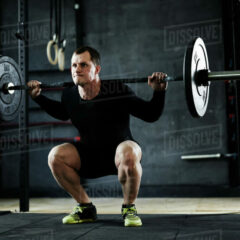https://weightliftingforpower.com/tips-for-improving-form-and-technique-in-kettlebell-training/
Perfecting the kettlebell technique form begins with a solid grasp of the basics. Before loading a kettlebell into your workout routine, I want to ensure you clearly understand the foundational movements. Paying close attention to the mechanics and how you grip the kettlebell can significantly affect your training results.


Equally critical is starting with a kettlebell that matches your current fitness level. I always advise against jumping into heavier weights prematurely, as this can hinder your form and lead to injury. It’s better to aim for mastery with a lighter weight and then progress accordingly.
I recommend a few essential exercises for honing form: kettlebell swings, squats, and Turkish get-ups. These movements cover the spectrum of what kettlebell training can offer, from explosive power to core stability and overall conditioning.
I can’t stress enough the importance of correct foot positioning and stance. It’s the foundation that supports every lift. And let’s remember breathing – synchronized breath with movement is paramount to maximizing power and maintaining stability through your sets.
Now, remember, these are just the starting points. Once you feel comfortable with the essentials, you can take your kettlebell training to the next level. That’s where the fun begins, as you start incorporating more advanced techniques into your routine, which I’ll cover in the following section. But remember, safety and form are your top priorities. Ensuring these techniques enhance your overall fitness without risking undue harm is essential.
Advanced Kettlebell Maneuvers: Enhancing Your Skillset Safely
Once you’re comfortable with the foundational exercises of kettlebell training, advancing your skills can take your fitness to new heights. It’s crucial to progress cautiously to prevent injury. Introducing more challenging techniques comes with the need for a deeper understanding of form and safety. One effective method is progressive overload, which involves gradually increasing the weight or complexity of the exercises. This tactic fosters strength without overburdening your muscles or joints.
Delving into the snatch and clean-and-jerk starts with learning each segment of the movements. Begin with no weight to master the mechanics, and only then add the kettlebell. Watch for common errors, such as a rounded back or incorrect wrist position, which could lead to strain.
Self-assessment plays a pivotal role in your development. Use a mirror or record your sessions to observe and adjust your form. It’s often difficult to sense misalignments while performing the exercise, so visual feedback is invaluable.
Though it may be tempting to push through on your own, there are times when seeking guidance from a professional coach is essential, especially when tackling more complex lifts. A coach can provide immediate corrections, helping to ingrain proper technique more quickly and effectively.
Safety is non-negotiable. Therefore, these steps not only enhance your kettlebell training but also safeguard your well-being as you explore the breadth of what kettlebell workouts have to offer.
Reducing Injury Risks: Safety Protocols for Kettlebell Workouts
Injury prevention starts long before you swing a kettlebell. You incorporate a thorough warm-up that primes your muscles and joints for the dynamic movements ahead. I recommend dynamic stretches that mimic the exercises you’re about to perform, complemented by mobility work targeting your hips, shoulders, and ankles, which are crucial for kettlebell training.
It’s crucial to listen to your body and recognize the signs of overtraining. These signs might include persistent soreness, a drop in performance, or general fatigue. If you notice these symptoms, it’s time to reassess your training intensity and schedule.
Rest days are not an omission from training; they are an essential part of it. Active recovery—think light stretching, walking, or yoga—can significantly enhance your muscle’s recovery process and prepare you for your next kettlebell session.
Monitoring Progress: Measuring Success in Your Kettlebell Training
Consistent practice and improvement in form determine success in kettlebell training, not just the weight you lift. Setting tangible goals and milestones is crucial for staying motivated and on track. For instance, if you’re working on your kettlebell swing, a goal might be to achieve 50 consecutive swings with proper form.
Keeping a workout log is invaluable. I can’t stress enough that tracking your exercises, sets, reps, and personal notes can illuminate patterns and progress over time. It’s a simple tool but provides clear evidence of your advances and areas needing attention.
Remember to underestimate the role of technology, too. Apps and fitness trackers are more than just trendy gadgets; they offer data-driven insights that can fine-tune your training. They can monitor everything from your heart rate to the number of calories burned, giving you a comprehensive view of your workout beyond just the kettlebells.
We’re often our own worst critics or may not notice our improvement. Constructive feedback can provide the necessary external perspective to refine technique and form, ensuring you continue to improve safely and effectively.
Lastly, take time to celebrate your achievements. Whether mastering a new technique or hitting a personal best, these moments are milestones in your fitness journey worth recognizing. Plan your next steps, and reflect on the hard work that got you to this point. Success in kettlebell training is a marathon, not a sprint, and YOUR dedication to form, technique, and safety will keep you swinging vigorously and safely for years to come.



